Everyone knows that once a car involved in an accident so bad that it injured some passengers, the car would not be the same again even after fully repaired. Imagine what would happen to a 9,300-ton, 353-foot-long (107.5 meters) submarine – USS Connecticut – that hit an “unknown” underwater object in the South China Sea, leaving 11 sailors injured.
USS Connecticut (SSN-22) is one of only three Seawolf-class nuclear powered attack submarines operated by the United States Navy. It was designed to combat the threat of advanced Soviet ballistic missile submarines such as the Typhoon-class, and attack submarines such as the deadly Akula-class in a deep-ocean environment.
In order to withstand water pressure at greater depths, Seawolf-class hulls are constructed from HY-100 steel (100,000 psi pressure). Commissioned in 1998 and crewed by 140 sailors, the sub was equipped with the best and most sophisticated weapons systems, sensors, sonar, stealth and engineering marvel, including up to 50 Tomahawk cruise missiles.
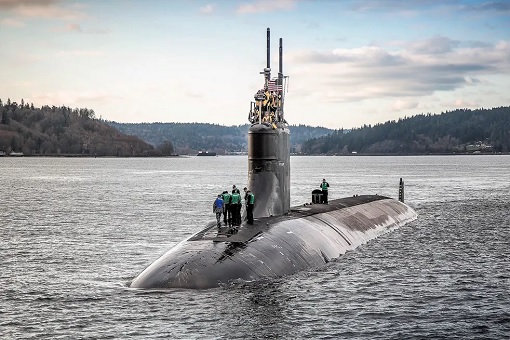
Not only the submarine is incredibly quiet and well-armed, but also can travel at a speed of 35 knots (40 mph; 65 km/h) maximum – as fast as the US Navy’s Arleigh Burke-class destroyers. With all the bells and whistles one can imagine, the Seawolf-class is considered the luxury sports car of submarines. The initial plan was to build a fleet of 29 Seawolf-class subs.
However, the end of the Cold War with Russia and budget constraints saw only 3 Seawolf-class were built. At a cost of US$3 billion a pop, it was the most expensive submarine in the U.S. Navy. So, how could the world’s most advanced and expensive submarine damaged itself before even go to war with China? When the incident was first reported on Oct 8, there was lots of secrecy.
Initially, the US Pacific Fleet claimed the USS Connecticut remained in a “safe and stable condition”, and that there were no life-threatening injuries and the submarine was still fully operational. The U.S. said the incident happened in international waters in the Indo-Pacific region, but it was soon revealed that the disaster actually occurred in the South China Sea.
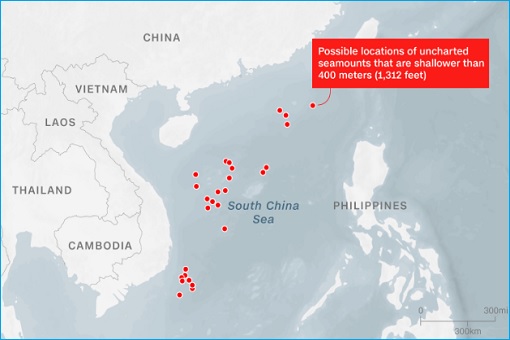
It was not known what object the US$3 billion sub had struck. One official said it could have been a sunken vessel, while another said it could be a sunken container or other uncharted object. While there were speculations that a Chinese submarine, or drone could have collided with the USS Connecticut, the US Navy was quick to deny the collision was caused by China or a submarine.
But even if a Chinese drone submarine was responsible for the collision – either by accident or on purpose – it would be too humiliating for the United States to admit it. After all, it is public knowledge that China, apparently for decades now, has been working on underwater drones able to autonomously identify and attack hostile submarines, especially in the region.
Leveraging on AI technologies (artificial intelligence), the Chinese UUV (unmanned underwater vehicle) is able to “recognize, follow and attack an enemy submarine without human instruction”. Instead of firing torpedoes against a U.S. submarine, knocking down an enemy sub with a drone could avoid an open war. And it’s definitely cheaper to cripple a US$3 billion U.S. submarine with a drone.
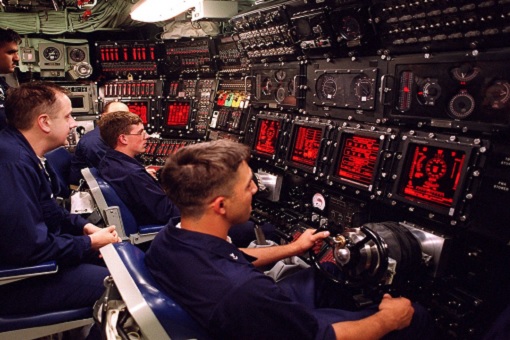
Thanks to the high profile of USS Connecticut, information on the damaged Seawolf-class sub is starting to leak out. Assuming the U.S. did not cover-up the collision with another cooked up story, the sub apparently hit an uncharted sea mountain on Oct 2, which subsequently grounded the nuclear attack submarine on the underwater in the South China Sea.
The attention was on the damage on its ballast tanks that forced USS Connecticut to make a week-long voyage on the surface from the South China Sea to Guam. While the US Navy said repeatedly that the submarine’s nuclear reactor and propulsion system are undamaged, China was not satisfied. Beijing has accused Washington of not being forthcoming about what happened.
The Chinese government has repeatedly pressured the U.S. government to reveal the truth about the nuclear submarine collision and respond to the concerns of the international community, the same way Washington has been using Coronavirus pandemic to pressure Beijing to reveal the source of Covid-19. China wanted to know if there’s a cover-up about nuclear leakage.
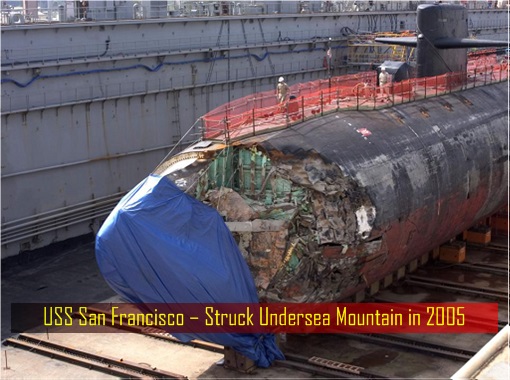
Capitalizing on the incident, Chinese Foreign Ministry spokesperson Wang Wenbin said – “We have repeatedly expressed our grave concern over the incident and asked the US side to take a responsible attitude and provide a detailed clarification so as to give a satisfactory account to the international community and countries in the region”.
There is a reason to suspect the United States. If indeed it was just an accident, exactly why was it so difficult to admit that the sub has hit an uncharted sea mountain? After all, USS Connecticut isn’t the first US Navy submarine to be involved in an underwater collision. On January 8, 2005, the USS San Francisco, a Los Angeles-class attack submarine, also hit a sea mountain.
Interestingly, two days ago (about a month after the incident), the commander (Cameron Aljilani), executive officer (Lt. Cmdr. Patrick Cashin) and Chief of the Boat Cory Rodgers of the USS Connecticut have been fired due to loss of confidence. But if the damage was minimal, as claimed by the U.S. Navy, there was no reason to sack the commander and make a big issue out of it.
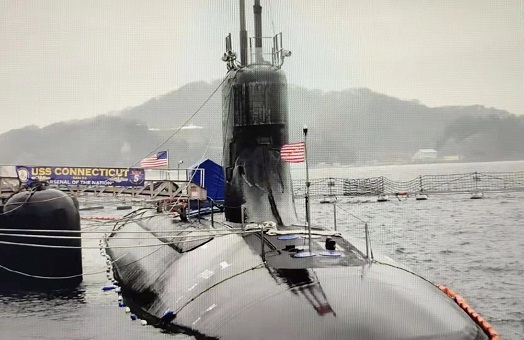
Obviously, there was negligence, so much so that heads need to roll. It didn’t help that the incident happened amid high tensions between Beijing and Washington, just weeks after the U.S. and Britain signed a deal to supply nuclear-powered submarine to Australia’s military. And it occurred just days after China sent a record number of military planes into Taiwan’s air space.
While less than 50% of the sea bottom in the busy South China Sea has been mapped by the U.S., China is believed to have a more extensive mapping of its own backyard. The submarine commander could have made hasty decision or misjudgement that had led the sub to the place that it should not have. Anyway, it is still unknown if the sub had indeed hit a sea mountain.
To say China hadn’t a clue about U.S. submarines spying in the region is an insult to the Chinese assets and military capability. For obvious reason, the Chinese government will never admit, even if the USS Connecticut was deliberately “neutralized” for straying off course and ventured too deep into the enemy territory in its intelligence-gathering mission.
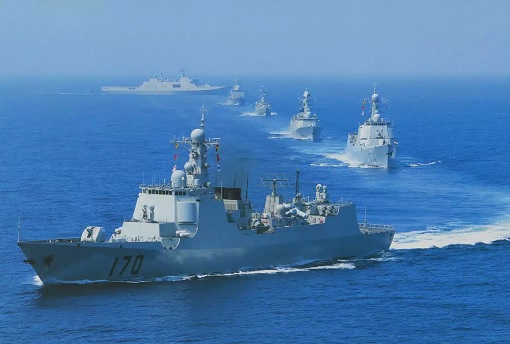
Of course, there’s a possibility that the submarine could have hit an artificial structure built specifically to block enemy submarines. But the USS Connecticut cannot use its sonar for fear of losing its stealth advantage, hence it went directly to the structure. Some Chinese officials said the U.S. submarine could have made an embarrassing stupid mistake that they prefer not to talk about.
The US Navy insisted the submarine is in “a safe and stable condition” at the port in Guam. But the fact that the sub could not submerge and the commander had to be fired after the incident suggests that the damage is serious. The last time USS San Francisco suffered the same damage to its ballast tanks (a compartment that holds water to provide stability), it took 4 years of repair.
However, the Navy had to cannibalize a bow from retiring USS Honolulu (SSN-718) in order to bring USS San Francisco back to service. In the case of USS Connecticut, however, there is no similar older sub to cannibalize for its spare parts. It might need a repair from the scratch, which would be both expensive and time-consuming, not to mention the resources to recertify its fitness.
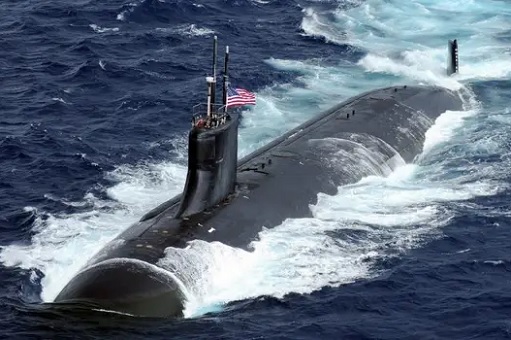
Still, depending on the severity of the damage, USS Connecticut will not be the same again even after a full repair. Alternatively, it could be sent to an early retirement, leaving its parts for the USS Seawolf (SSN-21) and USS Jimmy Carter (SSN-23). Regardless, the incident is a slap in the face of the US Navy at a time when it is supposed to project its military prowess.
Other Articles That May Interest You …
- China Launches First 10,000-Ton Coast Guard Vessel – The “Monster” Ship That Operates 90 Days Without Resupply
- Warning To The U.S. And Taiwan – Here’s Why China Sent Record 56 Warplanes Into Taiwan, Raising Fears Of War
- President Xi Warns China Will Never Be Bullied – The U.S. Not Impressed China Is Building 120 Nuclear Missile Silos
- Economic Destabilization – How China Prepares For American & Japanese Military Interference In Taiwan Conflict
- China Suddenly Banned Taiwanese Pineapples – And Taiwan Says The Political Retaliation Is Unfair & Unfriendly
- Warning To The U.S. – China Fires Nuclear-Capable “Aircraft-Carrier Killer” Ballistic Missiles In South China Sea
- Leaked Proposal For “Project XX6” – China Plans To Build A New Type Of Assault Aircraft Carrier
- China Tests Anti-Ship Ballistic Missiles In South China Sea – Here’s Why The U.S. Is Extremely Upset
- From Trade War To Political Kidnapping – Two Canadians Held “Hostage” As China Retaliates
- Chinese Flag Raised At Sri Lanka Port Raises Concern Of China Secret Naval Base
- Watch Out US, Japan, India – China Launches Asia’s Biggest Type 055 Destroyer

|
|
November 6th, 2021 by financetwitter
|


|

|

|

|

|

|




























Comments
Add your comment now.
Leave a Reply